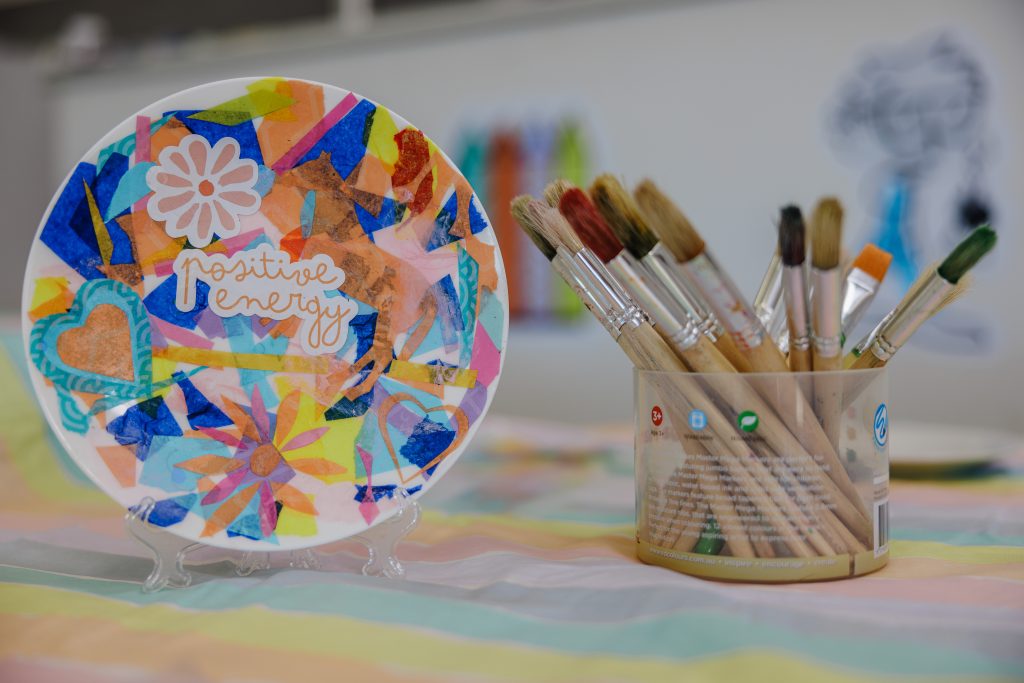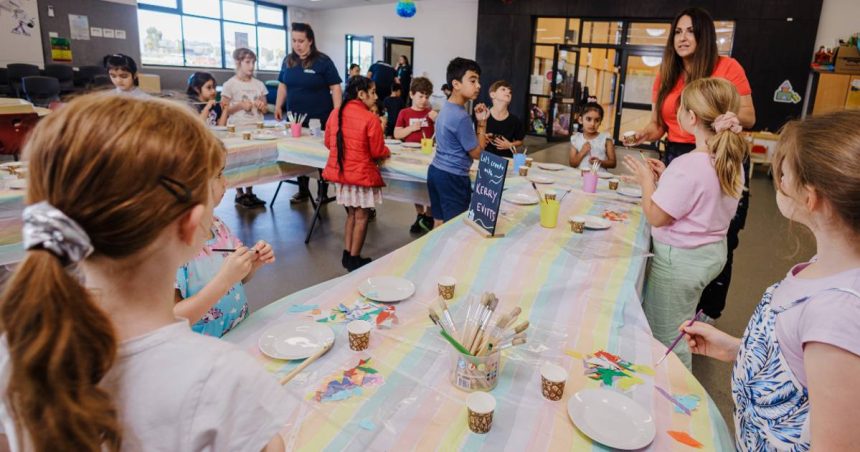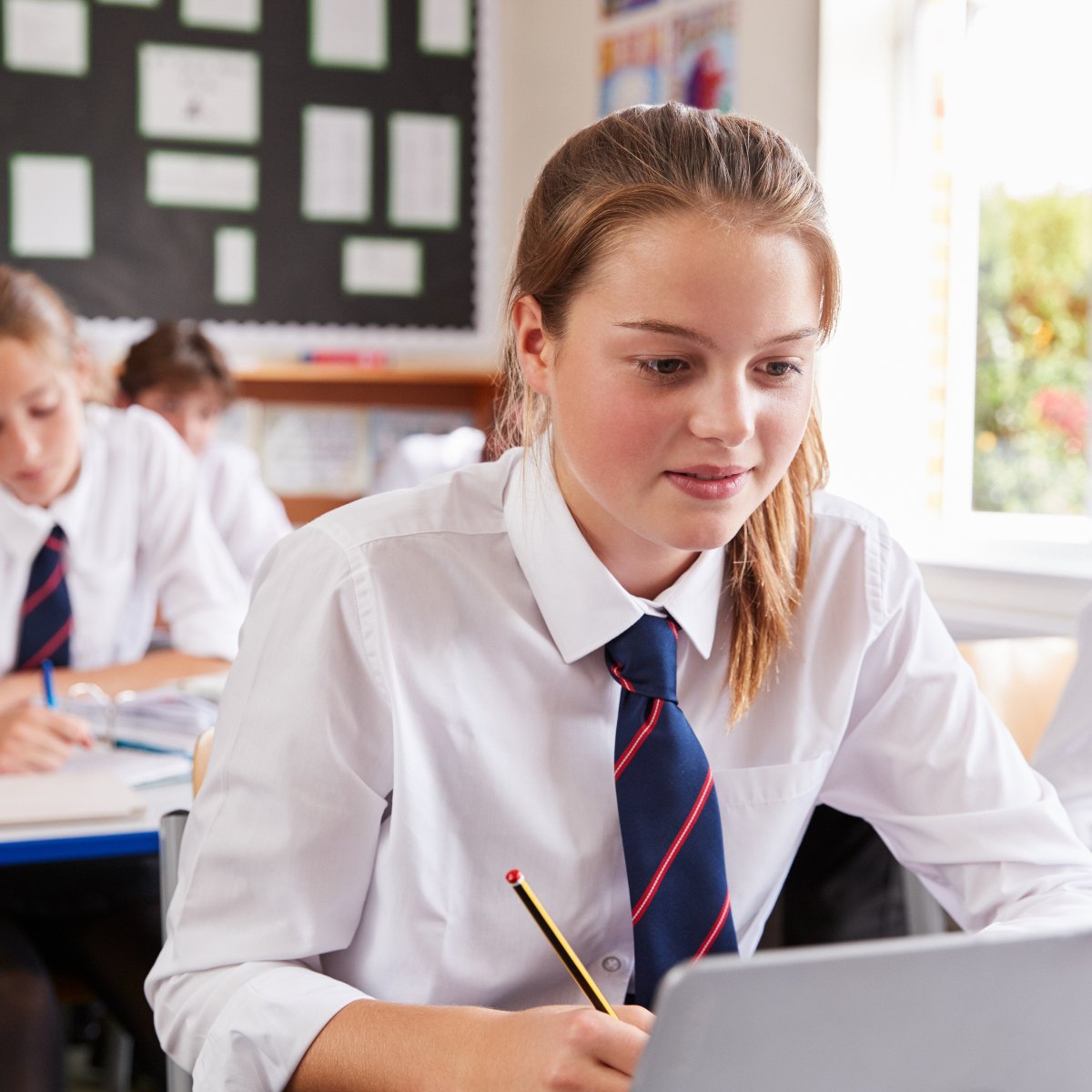Engagement in art-based activities for two or more hours a week plays a role in positive mental well-being and fosters cognitive development and emotional skills in children.
These research findings by the Good Arts, Good Mental Health (GAGMH) project at the University of Western Australia is why leading Outside School Hours Care (OSHC) provider Camp Australia has implemented ‘Big Art‘ into their daily OSHC programs, to get kids off screens and into the practice of healthy mental habits.
Renowned Melbourne-based artist and psychotherapist Kerry Evitts has been working with Camp Australia to develop the program, helping them turn OSHC into an art studio every Friday and encouraging children to unleash their creativity and imagination in free-spiritedness of arts and crafts.
“The Big Art program is much more than just providing pens and papers for children, it is an art movement, a fun, nurturing, inclusive environment that has been well thought out. With experts like me organising art activities designed to engage and inspire different age groups, using lots of varied materials, ideas, and methods,” she told EducationDaily.
“These activities have many goals: they help with mindfulness for mental health, improve fine motor skills, teach technical abilities, educate about art and of course importantly to create a sense of fun.”

Making art promotes mindfulness
As an artist and psychotherapist passionate about both art and mental health, Evitts says the Big Art program represents an ideal platform for enhancing well-being.
“Through creative expression, the act of making art promotes mindfulness, serving as a valuable outlet for reducing anxiety and stress. Engaging in the designed artistic activities within the program creates a sense of pride and accomplishment amongst the children as they admire their creations. This boosts confidence and nurtures a positive self-image which is vital for positive mental and emotional well-being.”
To lure today’s children away from screen-based entertainment, Evitts says art needs to work harder than ever – something she has seen first-hand as a mother of three who understands the “challenges of diverting children’s attention from screens and digital devices back to using their own imaginations”.
“It’s particularly challenging in the home environment. Persistence is key in this process, as once children do engage, they get great authentic joy from creativity,” she told EducationDaily.
“For parents navigating this landscape, I recommend establishing set and limited screen times and creating a dedicated art space in a corner of the home. This setup encourages regular use and exploration of artistic expression, helping to create a healthy balance between digital engagement and creative activities that promote imagination and personal growth.”

Escaping digital distraction
But in group settings, Evitts says children often embrace creative activities more readily, as there is typically less digital distraction.
Camp Australia CEO Warren Jacobsen told EducationDaily the decision to integrate art permanently into their OSHC programs came after three years of running successful Big Art campaigns.
“A survey conducted in 2023 with parents and educators revealed a strong desire for more Big Art programs in our services, highlighting the positive impact of these programs on children’s engagement and development,” he says.
“In doing so, we aim to continually provide children with enriching and creative experiences that enhance their overall well-being.”
Big Art, says Jacobsen, aims to recognise “the therapeutic and developmental advantages of artistic activities”, and offer an outlet for the creative self-expression that he believes is “essential for children’s mental and emotional health”.
“Additionally, engaging in art can boost children’s confidence as they see their skills improve and their creations come to life. It also promotes well-being by providing a relaxing and enjoyable activity that can alleviate stress and anxiety. Overall, the inclusion of art in our programs aims to foster a supportive environment where children can thrive creatively and emotionally.”
Sparking curiosity
For children who have been raised on digital screen-based entertainment, Jacobsen says Camp Australia’s educators are “highly skilled in engaging children and making creative activities appealing”.

“By linking activities to key events and themes that resonate with the children, our team can spark their interest and curiosity. Each team programs activities based on the interests and developmental stages of the children in their service, ensuring that the art activities are relevant and exciting for those attending,” he told EducationDaily.
“Most importantly, our educators create a welcoming and comfortable environment where children feel free to express themselves and explore their creativity.”









